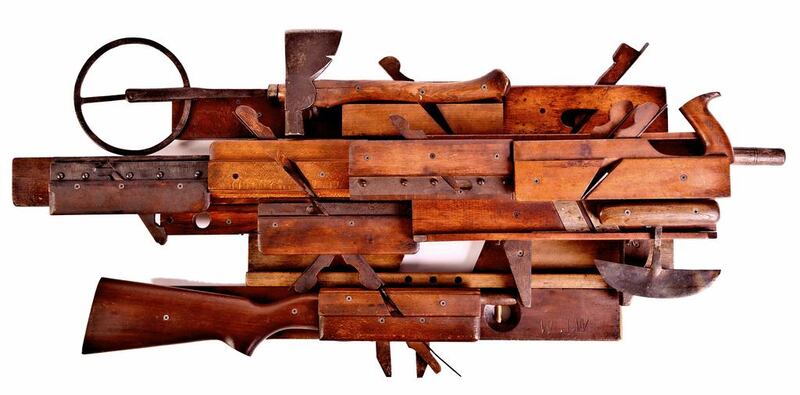The story that one usually hears about Sara Rahbar is that when she was a young child, her family fled from her native Iran to America. Forced out by war and smuggled across the border, Rahbar carried the traumatic memories with her and, much later in life, began to explore them through her art.
In a series titled Flags, she sewed Iranian fabric and other symbols of her heritage onto the American flag. They were historical portraits, which she describes as pages in a book archiving that period of history, and quickly brought her prominence. This year, the British Museum in London acquired two pieces from the Flags collection and Rahbar was invited to speak at the museum as part of a series of talks called Different Perspectives on Modern and Contemporary Iranian Artists.
But, as her solo exhibition Swarming opened in Dubai just two weeks later, Rahbar was keen to separate herself from this over-told biography.
“I’ve really gone beyond that now,” she says. “I’ve calmed down a lot and I feel my art has matured.”
This is apparent in her newer works. Of the three series from which the pieces in Swarming come from, only two are textile-based. War is a succession of heavy tarpaulins upon which Rahbar has hung the detritus of battle, mostly bullets and various tools or parts of guns. In 206 Bones, her most recent series, she has used mechanical objects made from wood to create multilayered and geometrically balanced sculptural pieces.
And lastly, Confessions is a collection of disjointed limbs and body parts cast in bronze that are placed on the floor of the gallery, almost discarded.
The sculptures show the artist’s arms with clenched fists and her feet in strange positions. In one, her severed head lies on the floor, encased in a mesh cage.
The art speaks of the human condition, where we measure and value ourselves according to materiality and replace the softness of human emotion with the coldness of violence.
“I am surrounded by violence, control, anxiety and a state of frozen pain in America, and this effects my work a great deal,” says Rahbar. “My own emotional state and personal life also play a big role in my work.”
Rahbar is also a poet. She feels every piece of her art deeply and, at her home in New York that doubles up as her studio, she lives with each piece, getting to know it until a name comes to mind.
“I work organically and intuitively, I collect things and put them together and I work until [each piece] is balanced, like a painting. I don’t question it too much, because if I do, then I will lose it. The title is the last touch. When the piece is done, I look at things, I read, I think and then all of a sudden it just comes to me.”
The pieces touch the very heart of Rahbar's practice. Nothing Left to Win, Nothing Left to Lose is the name given to a stack of hollow arms gripping an invisible central point. Do You Love Me? she asks through the title of the work that consists of human feet attached to poles and joined by a single hinge.
“They are awkward, they hang there unattached to anything and this makes me feel that in the end we all just need to belong to something,” she says. “It is very simple, we complicate things a lot, but in the end, we all just need to be loved.”
• Swarming runs until January 8 at Carbon 12, Dubai. Visit www.carbon12dubai.com
aseaman@thenational.ae





